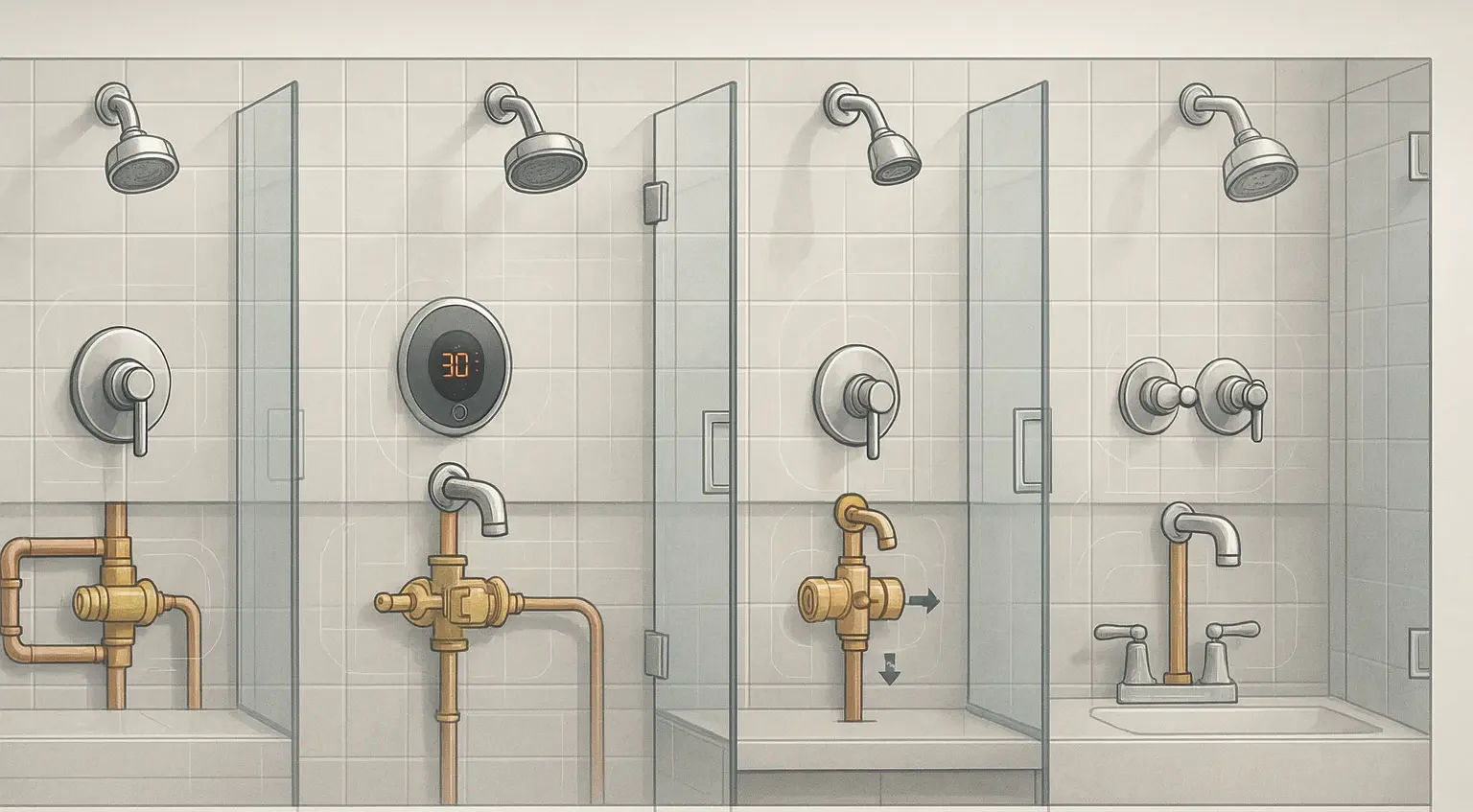
Essential Safety Features for Every Shower
Safety Features for Every Shower Shower safety is a top priority for a secure bathing environment. Falls are the leading


Choosing the right shower valve is a critical step in designing a functional and comfortable bathroom. With so many options available, understanding the different types of shower valves and their specific functions is key to ensuring you get the right balance of temperature control, water pressure, and safety.
Whether you’re renovating a luxurious master bath or upgrading fixtures in a guest space, this guide will help you navigate the choices—from basic manual mixers to advanced thermostatic valves. And if you’re also exploring premium fixtures for your kitchen, don’t miss our collection of unlacquered brass kitchen faucets and our curated selection of bridge faucets for timeless design inspiration.
A manual mixer valve is the simplest type. It combines hot and cold water, allowing you to adjust the temperature manually using a single handle or two separate handles.
Thermostatic valves regulate both water temperature and flow, keeping the water at a consistent temperature even if someone flushes a toilet or runs a faucet elsewhere.
For homes with premium fixtures like brass kitchen faucets, a thermostatic valve ensures the same level of control and durability across your bathroom and kitchen.
A pressure-balancing valve maintains consistent water pressure, adjusting the flow of hot and cold water based on supply changes. It’s a popular choice in homes where plumbing systems are older or shared among multiple fixtures.
If you’re considering a full bathroom remodel, it’s worth exploring whether a bridge faucet would complement your shower’s aesthetic.
Diverter valves control the flow of water between multiple shower outlets, such as a handheld showerhead and an overhead rain shower.
To maintain the beauty and function of brass fixtures in your bathroom, refer to our guide on how to clean brass with household products for proper care techniques.
The most advanced option, digital valves allow you to control temperature, flow, and even preset preferences through a touchpad, app, or voice command.
Beyond understanding the different types of shower valves, it’s crucial to factor in your home’s specific conditions and long-term goals. Here’s what homeowners often overlook when planning a bathroom renovation:
Certain valve types work better with specific water pressure ranges:
For homes with premium fixtures like unlacquered brass faucets, maintaining balanced pressure ensures smooth operation and protects internal components from wear.
Different valves come with different upkeep needs:
Regular cleaning is vital for all valve types, especially in areas with hard water. For brass fixtures and shower components, check out our article on how to clean brass with household products to prevent tarnish and maintain luster.
Your shower valve isn’t just a functional component—it’s part of your overall design statement:
For tips on more complex faucet installations, refer to our bridge faucet installation guide—the principles of careful planning and compatibility apply to showers, too!
When selecting a shower valve, consider:
And if you’re redesigning your entire space, remember to explore Insideast’s full faucet collection—from unlacquered brass kitchen faucets to sophisticated bridge designs, our fixtures are crafted for both form and function.
Understanding the different types of shower valves empowers you to make an informed decision for your bathroom renovation. From basic manual mixers to advanced digital controls, each valve type has unique strengths—and the right choice depends on your specific needs, space, and lifestyle.
For a cohesive home design, match your shower’s performance with high-quality fixtures throughout your home, such as bridge faucets or unlacquered brass faucets that bring elegance and durability to every room.

Safety Features for Every Shower Shower safety is a top priority for a secure bathing environment. Falls are the leading
Receive your order to your door address anywhere in the world using our shipping partners
You're covered by our 30 days return policy
Big part of our reviews testifies about the quality of support provided
Secured payments using renowned payment gateways